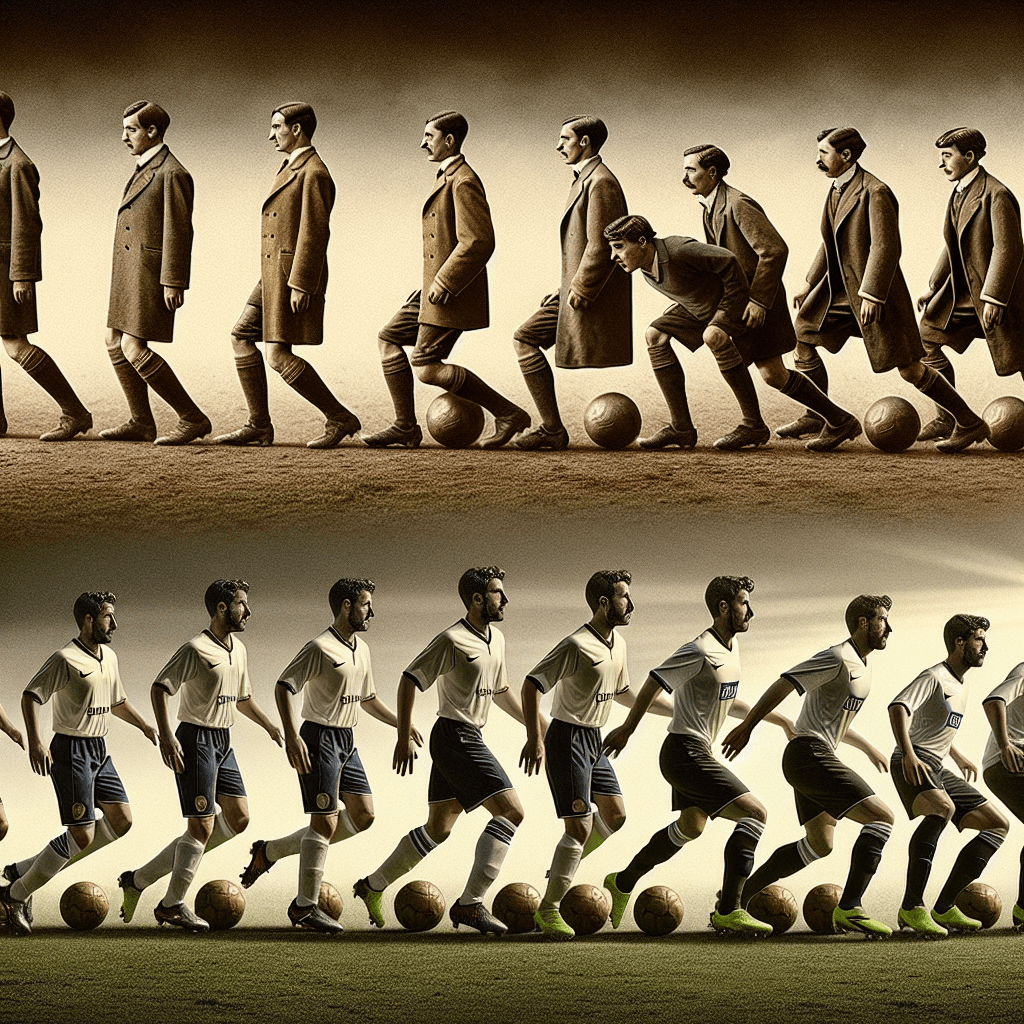[ad_1]
From Total Football to Tiki-Taka: The Evolution of Soccer Tactics Through the Ages
Soccer, commonly known as football outside of the United States, has a rich, dynamic history that spans over a century. The game has evolved significantly from its early forms, with changes in rules, styles of play, and tactics. Among the most revolutionary developments in the history of soccer are tactical systems such as Total Football and Tiki-Taka. These strategies have not only defined eras but have also influenced how the game is played worldwide. However, the evolution of soccer tactics stretches far beyond these iconic styles. This article delves into the journey through soccer’s tactical evolution, from its early days to the beautifully complex system we observe today.
The Genesis of Tactical Evolution
In the early years of organized soccer in the late 19th and early 20th centuries, the game was significantly more rudimentary and less tactical. Formations were rigid and primarily focused on attack or defense, often resembling arrangements such as a 2-3-5 (Pyramid) system, where teams deployed two defenders, three midfielders, and five forwards. This era’s football was characterized by long balls, physicality, and individual skill more than collective team play or intricate strategies.
The WM Formation and the Italian Catenaccio
The evolution of soccer tactics took its first major leap in the 1920s with the development of the WM formation by Arsenal manager Herbert Chapman. This system, which mimicked a 3-2-2-3 setup, introduced a more balanced approach between defense and attack. It positioned players to cover more areas of the pitch effectively. Following World War II, Italian soccer embraced a defensively oriented strategy known as Catenaccio or “the chain.” Spearheaded by teams like Inter Milan under coach Helenio Herrera in the 1960s, Catenaccio prioritized a strong defense, using a libero (sweeper) behind the line of man-marking defenders, and relying on counter-attacks to score.
Total Football Revolution
The 1970s ushered in one of the most transformative periods in soccer tactics, pioneered by Dutch club AFC Ajax and the Netherlands national team. Total Football, a concept credited to Rinus Michels and epitomized by players like Johan Cruyff, emphasized fluidity and versatility. In this system, any player could take over the role of any other player on the pitch, allowing the team to adjust formations dynamically and maintain possession effectively. This required players to be tactically astute and technically proficient, as the system depended on constant movement, positional exchanges, and a high pressing style.
The Birth of Tiki-Taka
Fast forward to the late 2000s, and the soccer world witnessed the rise of Tiki-Taka, a tactical philosophy deeply influenced by Total Football but distinct in its emphasis on short passing and movement, ball possession, and pressing after losing the ball. Perfected by FC Barcelona under managers like Frank Rijkaard and later Pep Guardiola, and the Spanish national team, Tiki-Taka dominated soccer with its mesmerizing passages of play, control of the game, and effective pressing. The philosophy behind Tiki-Taka was to win the ball back as quickly as possible and then keep it, creating a fluid, moving structure that was extremely difficult to defend against.
Modern Tactical Trends
The landscape of soccer tactics continues to evolve, with teams and coaches seeking to innovate and find new ways to win matches. The influence of Total Football and Tiki-Taka persists, but the modern game has also seen variations and new strategies. The use of advanced analytics and technology has led to more customized tactics and the application of pressing strategies such as the Gegenpress, popularized by Jürgen Klopp’s Borussia Dortmund and Liverpool sides. Furthermore, the rise of flexible formations, false nines, and the importance of full-backs in the attack reflect the game’s ongoing tactical evolution.
FAQs
What is Total Football?
Total Football is a tactical system in which any outfield player can take over the role of any other player in a team. It emphasizes fluidity, player versatility, and high pressing to maintain possession and control the game.
Who is considered the father of Total Football?
Rinus Michels, a Dutch football manager and player, is widely regarded as the father of Total Football.
What defines Tiki-Taka?
Tiki-Taka is characterized by short passing, possession-based play, and pressing after losing possession. It focuses on controlling the game through maintaining possession and making frequent positional exchanges.
How has modern technology influenced soccer tactics?
Modern technology, including advanced analytics, has allowed coaches to analyze games in greater detail, leading to more sophisticated and tailored tactical approaches, including player-specific roles and strategies based on statistical data.
What is the Gegenpress?
The Gegenpress, or counter-pressing, is a tactic where a team immediately attempts to win back possession after losing the ball, instead of retreating to defend. It aims to exploit the opposition’s disorganization in the moments after turnover.
The evolution of soccer tactics is a testament to the game’s beauty and complexity. From the structured chaos of the early systems to the sophisticated dance of modern strategies, football continues to captivate and evolve. As the game moves forward, the only certainty is that coaches and players will keep innovating, taking inspiration from the past while charting new tactical landscapes for the future.
[ad_2]






